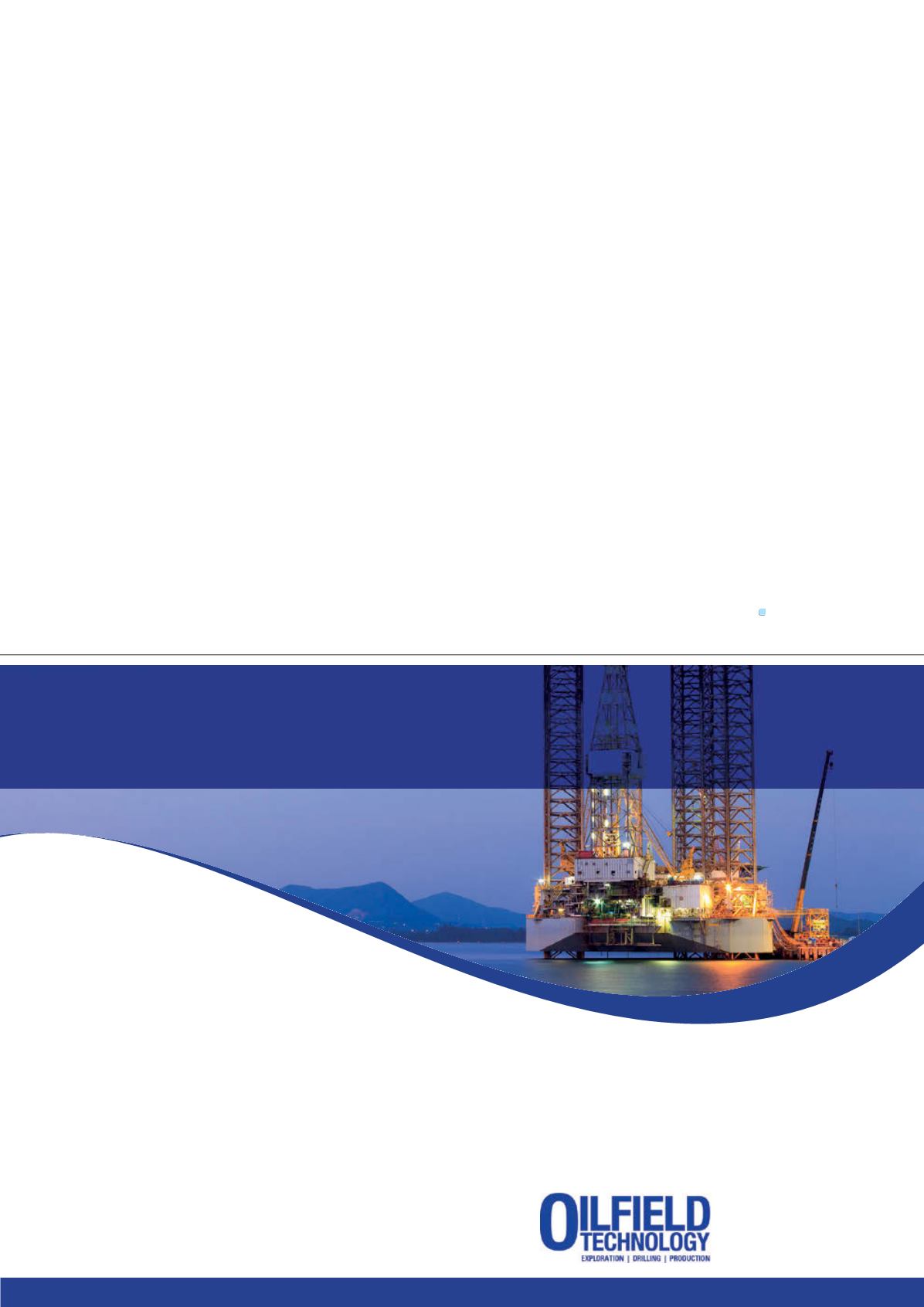
The technology has also been tested in demanding
applications offshore in the Gulf of Mexico. A major operator
drilling in the Eastern GoM utilised the 16.50 in. U713M bit to
drill a 2600 ft. section through the Base Miocene and Cretaceous
formations. This operator was particularly concerned with high
vibrations through these formations due to offsets they had drilled
in the past. The U713M bit was able to decrease stick-slip vibration
by 26% and increase ROP by 12% compared to said offsets.
Goingpast ‘OEM’
In the past several months, operators drilling in the Wolfbone
area of the Delaware Basin have been looking more to RSS to
reduce the time spent drilling horizontal wells. RSS have become
a more affordable option due to their reduced cost in the down
market, but improved performance is still required to complete
the value proposition.
Upon introduction of the RSS into the application, the RSS
manufacturer recommended their own PDC drill bits to be used
with the system. Parameters and bit selection were varied over
several runs, as were results, with runs being terminated too
often and too soon. After multiple attempts to complete the
interval in one run without success, some operators chose to
seek out other alternatives to push for efficiency gains through
competition. Ulterra was challenged to create a bit design that
was capable of finishing extended laterals in one run while
encountering shale with varying carbonate content. The criteria
for success in this application is extremely efficient, high rates
of penetration, produce accurate corrections on a motorised
push-the-bit system, and withstand the higher RPM capabilities
of new rotary steerable systems.
To respond to these requirements, engineers designed an
8.5 in. U616S with CounterForce technology. The U616S also
features an extended gauge pad designed to best utilise the
features of the specific RSS in use, in this case Schlumberger’s
PowerDrive Orbit™, to help the bit track in long laterals and
reduce corrective actions. This new design also increases the junk
slot area by nearly 12% from previous iterations to expedite the
removal of cuttings from the cutter faces, allowing higher ROP.
In two consecutive trials, the new 8.5 in. U616S bit completed
both intervals successfully in one run, producing an average ROP
15% higher than the RSS manufacturer’s own recommended
designs. The ability to complete the interval in one run while
producing higher ROP reduced operator drilling costs by an average
of US$7.24/ft, or a total of over US$67 000 in the lateral section.
Conclusion
Across all industries, most companies usually focus their
energy and expertise on their tools and services and leave
complimentary performance parts to other experts. This is true
for RSS makers like Weatherford, Gyrodata, Scout Downhole,
and others. Some companies, however, produce their own OEM
(original equipment manufacturer) drill bits, and obviously they
will often recommend them with self-benefiting reasons.
In high-cost, high-performance applications, which are
often identifiable by the use of RSS, ‘stock’ equipment is
seldom the best option. There are many great car makers, but
they all rely on other companies for the best tires in the world.
Similarly, independent of the make and model of RSS tools, the
evidence is growing that pairing them with a vibration reducing,
performance enhancing bit is a good decision.
A global industry
requires a global
publication
Global publication
Subscribe online at:


